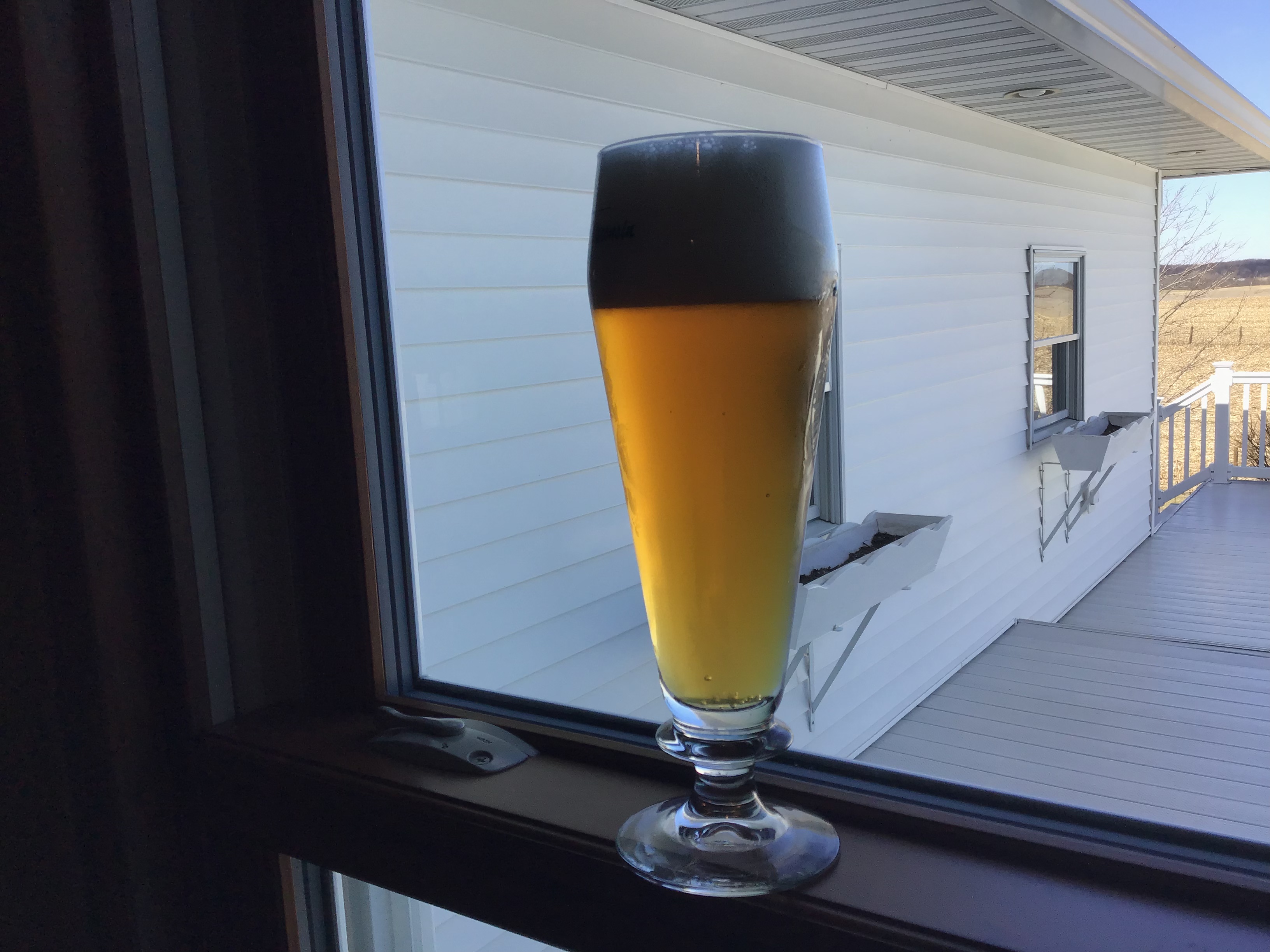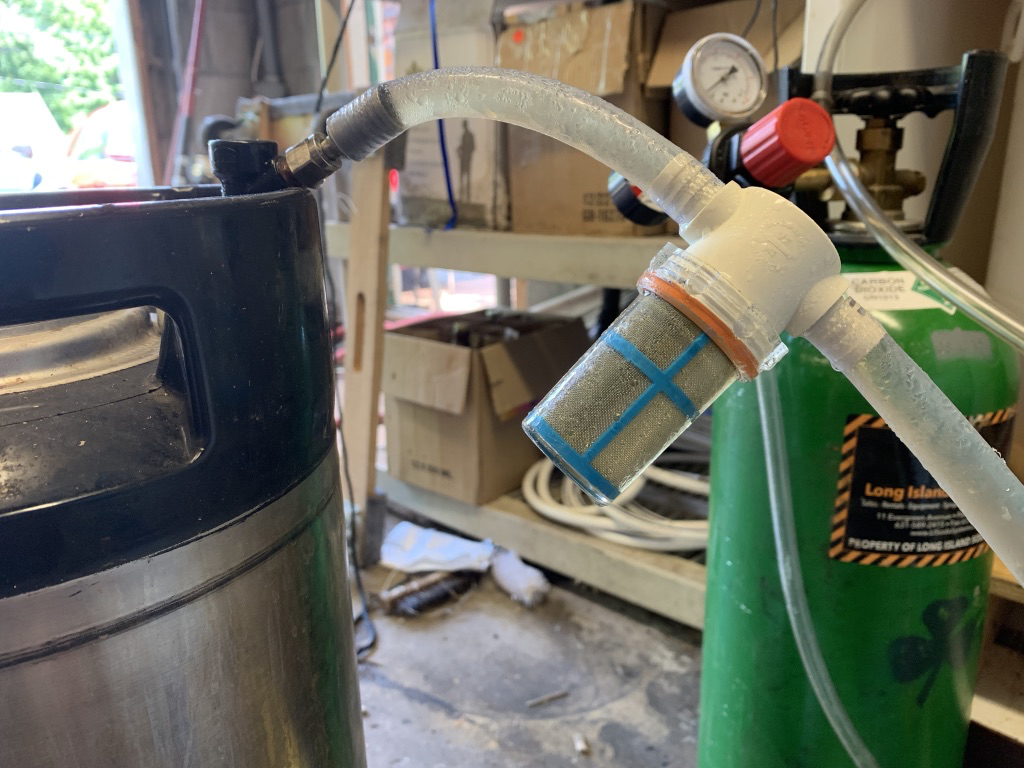1. Doing things differently in the dry hop kegging process creates some briefly awkward moments that probably won't be awkward next time.
2. The common practice of filling the keg with sanitizer to purge it with CO2 had some issues. The minimum volume of sanitizer that is left in the keg is 3-6oz measured over 8 practice attempts UNLESS you invert the keg and try to blow the rest through the keg's blow hole.
3. Inverting the keg to do this created a lot of clanky metal on metal sounds that will certainly scuff the metals over time. I was not comfortable with this process. This makes filling the keg with sanitizer and pushing CO2 for the purpose of preparing a keg full of CO2 an unrealistic proposition filled with two kinds of compromise.
4. Instead, I chose to sanitize the keg. Dump the sanitizer. Fill the keg with CO2 @ 30psi. Purge and repeat 5x. Then the beer was transferred into the keg with 80% gravity and 20% CO2.
5. The results of this relatively new keg dry hop process will be explained in the next post.
6. Spoiler - as a default homebrew skeptic of new devices, the first impression pleasantly exceeded my exceptions in more ways than I could have hoped for.
2. The common practice of filling the keg with sanitizer to purge it with CO2 had some issues. The minimum volume of sanitizer that is left in the keg is 3-6oz measured over 8 practice attempts UNLESS you invert the keg and try to blow the rest through the keg's blow hole.
3. Inverting the keg to do this created a lot of clanky metal on metal sounds that will certainly scuff the metals over time. I was not comfortable with this process. This makes filling the keg with sanitizer and pushing CO2 for the purpose of preparing a keg full of CO2 an unrealistic proposition filled with two kinds of compromise.
4. Instead, I chose to sanitize the keg. Dump the sanitizer. Fill the keg with CO2 @ 30psi. Purge and repeat 5x. Then the beer was transferred into the keg with 80% gravity and 20% CO2.
5. The results of this relatively new keg dry hop process will be explained in the next post.
6. Spoiler - as a default homebrew skeptic of new devices, the first impression pleasantly exceeded my exceptions in more ways than I could have hoped for.





